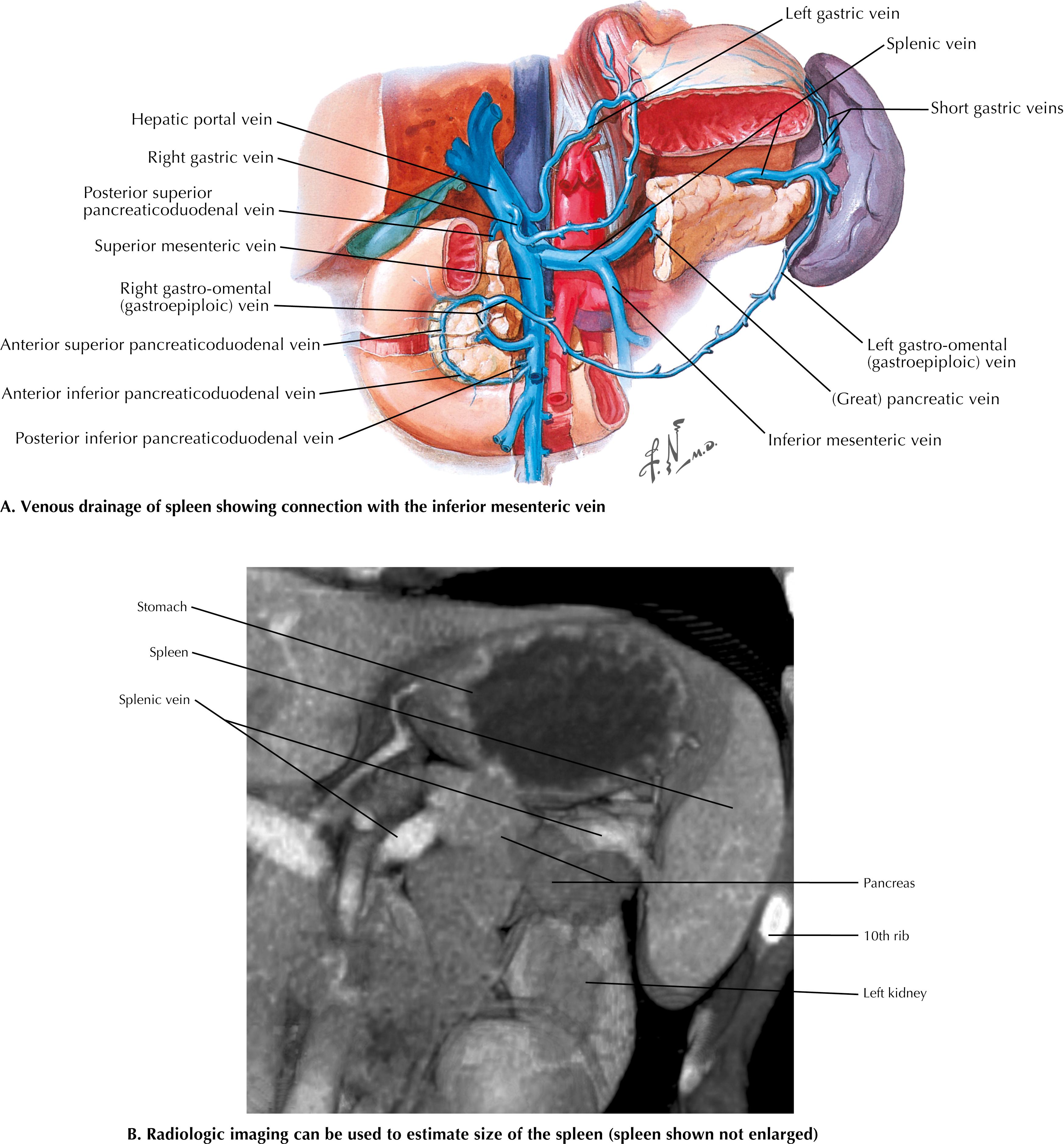Physical Address
304 North Cardinal St.
Dorchester Center, MA 02124
The spleen is one of the most commonly injured organs associated with blunt abdominal trauma. Therefore it is not surprising that previously the most common indication for splenectomy was motor vehicle accidents. However, removal of the spleen is not without consequence, as overwhelming post-splenectomy sepsis contributed to increased mortality. Such concerns led to the development of splenic salvage procedures to preserve the immunologic function of the spleen. Because of advances in care-pathways and interventional radiology, most splenic trauma is treated nonoperatively with observation or embolization, and removal of the spleen is now most frequently indicated for patients with benign or malignant hematologic disorders who are not responding to medical therapy. The most common such conditions include immune thrombocytopenic purpura (ITP), autoimmune hemolytic anemia, hereditary spherocytosis, and splenomegaly, in which there is concern for an underlying hematologic malignancy. Other hematologic disorders, such as thrombotic thrombocytopenic purpura (TTP), symptomatic thalassemia, and Felty syndrome, may also require splenectomy. Although still required in some cases, open splenectomy has decreased in favor of minimally invasive approaches, which have been found to safely and effectively reduce pain, hospital stay, and complications.
A thorough understanding of the anatomy of and surrounding the spleen is crucial for splenectomy ( Fig. 17.1 ). The spleen can vary in size, depending on the underlying pathology. A normal spleen is typically less than 11 cm and weighs between 150 and 200 g; splenomegaly is diagnosed when the weight is greater than 1 kg. Accessory spleens are a common abnormality and occur in approximately 20% of patients. These are usually about 1 cm in size and are most commonly located at the splenic hilum. More than one accessory spleen can be present in a minority of patients. The surgeon must be aware of this because accessory spleens can be missed more commonly with laparoscopy than with an open procedure. Failure to identify an accessory spleen can lead to persistent disease, depending on the diagnosis.

The spleen is located in the left upper quadrant, adjacent to the greater curvature of the stomach, the tail of the pancreas, the left kidney, and the splenic flexure of the colon. Superiorly and laterally, it is bounded by the diaphragm, separating it from the thoracic cavity, and anteriorly it is protected by the ninth through eleventh ribs. The organ is suspended in place by the splenorenal, gastrosplenic, splenocolic, and splenophrenic ligaments. The splenorenal and splenogastric ligaments contain the vascular supply of the spleen, consisting of the splenic and short gastric vessels, respectively. The splenorenal ligament also contains the tail of the pancreas, the only intraperitoneal portion of this organ, which has been found to touch the splenic hilum in approximately 30% of patients and must be protected during splenectomy to prevent a pancreatic fistula.
The vascular supply of the spleen arises from the splenic and short gastric vessels. The splenic artery is a branch of the celiac trunk and travels along the superior border of the pancreas. There is significant variability of this blood supply and there are two main variations. In the distributed type, the artery has a short trunk and separates into multiple branches distal to the splenic hilum. In contrast, the magistral type has a long trunk and divides into multiple branches within 2 cm of the hilum. Normally, there is also a superior polar and an inferior polar artery that arise from the splenic artery. The short gastric arteries originate from the terminal splenic artery, as does the left gastroepiploic artery, and these supply the fundus of the stomach along its greater curvature. The vessels are short in length, variable in number, and course through the gastrosplenic ligament to the gastric fundus. These vessels potentially provide enough blood flow to the spleen independent of the splenic artery. The splenic vein is formed by segmental venous branches from the trabeculae at the hilum. These vessels travels posterior to the superior border of the pancreas to join with the superior mesenteric vein to form the portal vein. The inferior mesenteric vein usually drains into the splenic vein ( Fig. 17.2A ).

Become a Clinical Tree membership for Full access and enjoy Unlimited articles
If you are a member. Log in here